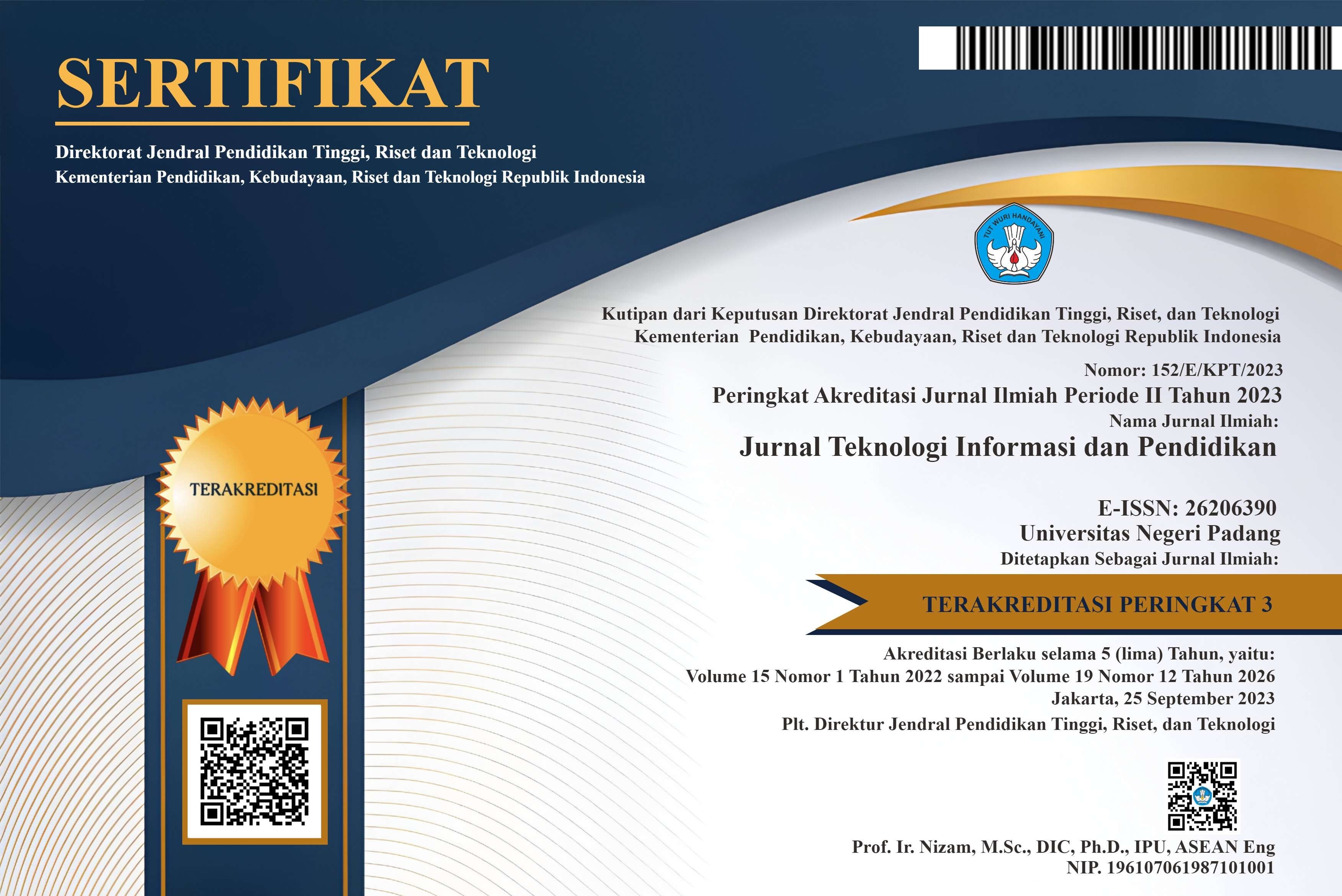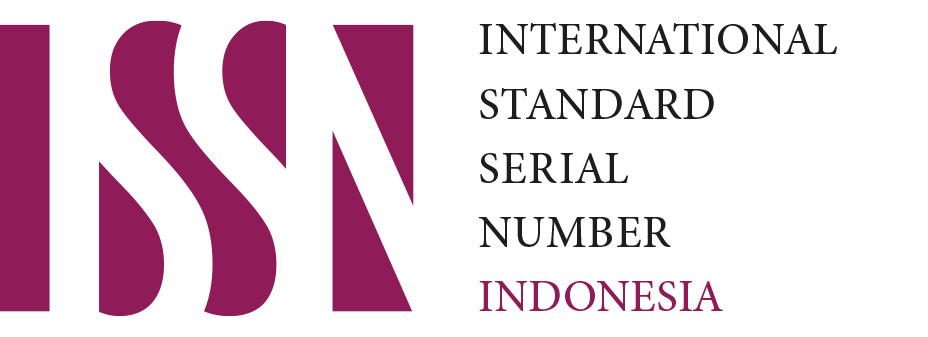Development of a Mail Management System (SMART) as a Solution to the Mail Archive Problem at the Malang Customs Office
DOI:
https://doi.org/10.24036/jtip.v17i2.868Keywords:
Mail Management System, Customs Office, Document Management, System Usability Scale (SUS), Efficiency Improvement, Digital Archive ManagementAbstract
The study aims to create a digital mail management system, known as SMART, to address the inefficiencies of the current manual letter archiving system at the Malang Customs and Excise Supervision and Service Office. The existing system, which relies on Microsoft Excel, is time-consuming and prone to errors. This leads to difficulties in searching for specific letter scans and the potential loss of hard-file archives. The SMART system, designed using the Waterfall Method and the CodeIgniter framework, is a web-based information system that allows the management of incoming, outgoing, and internal letters in a digital format. The system includes features such as inserting, updating, and deleting letters, as well as uploading scanned letter files. According to the System Usability Scale (SUS) test results, the SMART application is highly usable, with an average score of 93.50, which exceeds the benchmark of 68. The implementation of SMART is expected to significantly improve the efficiency of the administration section's document archiving process, enhancing the accessibility and management of letter archives at the Malang Customs and Excise Supervision and Service Office.
References
T. S. Ustun, C. Ozansoy, and A. Zayegh, “Recent developments in microgrids and example cases around the world—A review,” Renew. Sustain. Energy Rev., vol. 15, no. 8, pp. 4030–4041, Oct. 2011, doi: 10.1016/j.rser.2011.07.033.
E. Syahputra et al., “Penindakan Bea Dan Cukai Dalam Melakukan Penyidikan Terhadap Para Wisatawan Asing Yang Membawa Narkotika,” Nusantara Hasana Journal, vol. 2, no. 3, pp. 46–53, Aug. 2022, [Online]. Available: https://nusantarahasanajournal.com/index.php/nhj/article/view/430
M. Arianza Bima, R. Rahayu, S. Winata, and E. Syahputra, “Penindakan Bea Dan Cukai Dalam Melakukan Penyidikan Terhadap Para Wisatawan Asing Yang Membawa Narkotika,” Nusantara Hasana Journal, vol. 2, no. 3, pp. 63–71, Aug. 2022, [Online]. Available: https://nusantarahasanajournal.com/index.php/nhj/article/view/431
“Situs Resmi Kanwil Bea Cukai Jatim 2,” Feb. 2024. https://kanwiljatim2.beacukai.go.id/ (accessed Nov. 12, 2024).
S. Syukhri and P. Gusmayeni, “Design of Web-Based Archive Management Information System,” Jurnal Teknologi Informasi Dan Pendidikan, vol. 14, no. 2, pp. 92–98, Sep. 2021, doi: 10.24036/tip.v14i2.429.
S. Marlina and M. Leo Radhitya, “Mail Management System in the Digitalization of Village Administration: A Case Study of Batuyang Village Office, East Lombok,” TECHNOVATE: Journal of Information Technology and Strategic Innovation Management, vol. 3, no. 1, pp. 148–155, Jul. 2024, doi: 10.52432/technovate.1.3.2024.148-155.
S. Guntur Guntur, A. Ichsan, and I. Purnama Sari, “Designing a Web-Based Mail Management System at the Beringin Helvetia Sub-district Office,” Altafani: Jurnal Pengabdian Masyarakat, vol. 1, no. 1, pp. 11–18, Mar. 2024, doi: 10.30596/altafani.v1i1.48.
M. Z. A. Rikiti, E. Kusmayanto, and R. Kurniawati, “Design and development of Help Patient Data Management Information System at Sinergi Atap Negeri Foundation Web-Based using Codeigniter,” Journal of Applied Engineering and Technological Science, vol. 3, no. 2, pp. 235–245, Jun. 2022, doi: 10.37385/jaets.v3i2.792.
K. Curcio, T. Navarro, A. Malucelli, and S. Reinehr, “Requirements engineering: A systematic mapping study in agile software development,” Journal of Systems and Software/the Journal of Systems and Software, vol. 139, pp. 32–50, May 2018, doi: 10.1016/j.jss.2018.01.036.
I. Sommerville, Software Engineering. Addison-Wesley, 2015.
A. De Lucia and A. Qusef, “Requirements engineering in agile software development,” Journal of Emerging Technologies in Web Intelligence, vol. 2, no. 3, Aug. 2010, doi: 10.4304/jetwi.2.3.212-220.
R. J. Holden, “A simplified System Usability Scale (SUS) for cognitively impaired and older adults,” Proceedings of the International Symposium of Human Factors and Ergonomics in Healthcare, vol. 9, no. 1, pp. 180–182, Sep. 2020, doi: 10.1177/2327857920091021.
A. Kaya, R. Ozturk, and C. A. Gumussoy, “Usability Measurement of Mobile Applications with System Usability Scale (SUS),” in Lecture notes in management and industrial engineering, 2019, pp. 389–400. doi: 10.1007/978-3-030-03317-0_32.
T. Ananda, “Analisis Penggunaan Repository Perpustakaan Universitas Medan Area (UMA) dengan Menggunakan Metode iSystem Usability Scale (SUS),” Jurnal Teknologi Informasi Dan Pendidikan, vol. 16, no. 1, pp. 206–217, Oct. 2023, doi: 10.24036/jtip.v16i1.782.
Y. Tian and C. Stewart, “History of E-Commerce,” in IGI Global eBooks, 2006, pp. 559–564. doi: 10.4018/978-1-59140-799-7.ch090.
E. Radcliffe, B. Lippincott, R. Anderson, and M. Jones, “A Pilot Evaluation of mHealth App Accessibility for Three Top-Rated Weight Management Apps by People with Disabilities,” International Journal of Environmental Research and Public Health/International Journal of Environmental Research and Public Health, vol. 18, no. 7, p. 3669, Apr. 2021, doi: 10.3390/ijerph18073669.
M. Mawardi, “Rambu-rambu Penyusunan Skala Sikap Model Likert untuk Mengukur Sikap Siswa,” Scholaria, vol. 9, no. 3, pp. 292–304, Sep. 2019, doi: 10.24246/j.js.2019.v9.i3.p292-304.
J. R. Lewis, “The system usability scale: past, present, and future,” International Journal of Human-computer Interaction, vol. 34, no. 7, pp. 577–590, Mar. 2018, doi: 10.1080/10447318.2018.1455307.
M. R. Pradana and N. Nuryuliani, “Redesign Of Ipusnas Application Using User Centered Design Method,” International Journal Science and Technology, vol. 2, no. 1, pp. 73–79, Mar. 2023, doi: 10.56127/ijst.v2i1.866.
C. A. Crespo-Santiago and S. De La Cruz Dávila-Cosme, “Waterfall method: a necessary tool for implementing library projects,” HETS Online Journal, vol. 1, no. 2, pp. 81–92, Nov. 2022, doi: 10.55420/2693.9193.v1.n2.91.
E. Saleh and F. ElShahrani, “Extracting Functional and Non-Functional requirements for e-learning systems,” Al-Majallah Al-dawlīYah Lil-ʻulūM Al-tarbawīYah Wa-al-āDāB, vol. 2, no. 5, Jan. 2023, doi: 10.59992/ijesa.2023.v2n5p3.
B. Hnatkowska and M. Cebinka, “Activity Diagram Generation based on Use-Case textual Specification,” Computing and Informatics, vol. 40, no. 4, pp. 772–795, Jan. 2021, doi: 10.31577/cai_2021_4_772.
M. N. Arifin and D. Siahaan, “Structural and semantic similarity measurement of UML use case diagram,” Lontar Komputer/Lontar Komputer, vol. 11, no. 2, p. 88, Jul. 2020, doi: 10.24843/lkjiti.2020.v11.i02.p03.
R. Fauzan, D. Siahaan, S. Rochimah, and E. Triandini, “A different approach on automated use case diagram semantic assessment,” International Journal of Intelligent Engineering and Systems, vol. 14, no. 1, pp. 496–505, Feb. 2021, doi: 10.22266/ijies2021.0228.46.















.png)














